Table of Contents
What to Consider When Looking For a Pet Rabbit Breed for a Kid
When considering a rabbit breed as a pet for your kiddo, there are a few significant factors you’ll want to consider.
Size and Temperament
Not all rabbits are created equal, and some breeds may be a bit too large or too energetic for small children. Look for breeds known for their gentle, friendly nature and manageable size.
From my experience, children love to hold and cuddle their pets, and rabbits are no exception. Some breeds, especially the smaller ones, are particularly easy to handle. Just remember, though, rabbits are fragile creatures with delicate spines, so always supervise your child to ensure they’re holding the bunny properly!
Adaptability is another crucial factor to consider. Some breeds are highly adaptable and adjust smoothly to new environments and routines. This is particularly helpful if your family travels frequently or your household is bustling with activity. I found that adaptable rabbit breeds tend to handle these changes better, causing less stress for your little one and their furry friend.
Finally, consider the rabbit’s activity level. Some breeds are more active and playful, while others are more laid-back and prefer to lounge around. If your child is high-energy, they might enjoy a playful rabbit matching their enthusiasm. On the other hand, a more relaxed rabbit could be a better match for a quieter child. This is something I learned the hard way – my son’s high-energy rabbit had him running around the house non-stop!
Lifespan
Depending on the breed, rabbits can live anywhere from 5 to 12 years. Make sure you’re ready for the commitment!
A rabbit’s lifespan can be affected by many things, like what they eat, where they live, and how well they are cared for. If rabbits eat a good mix of hay, veggies, and a little bit of pellets, it can help them stay healthy and live longer. It’s also vital to take rabbits to the vet regularly to catch any sicknesses early and stop them from getting worse.
The environment in which a rabbit lives significantly impacts its lifespan. Indoor rabbits generally live longer than those kept outdoors, as they are protected from harsh weather conditions, predators, and diseases. Also, indoor rabbits are more likely to receive timely attention if they become ill, increasing their chances of a long, healthy life.
Care Requirements
Some rabbits require special care, including specific diets or grooming needs.
Keeping a pet bunny isn’t all just fun and games; there’s a serious side to it, too. It’s like having a fluffy little friend who loves to play but also needs your complete attention to be healthy and happy.
The healthy diet and care for an active rabbit go hand in hand. An ideal bunny diet consists of hay, fresh veggies, and a sprinkling of pellets. Hay should be the main hero of their meals because it’s great for their digestion and grinding down their constantly growing teeth.
Now, let’s talk about something a bit less fun but just as important – the litter box. Rabbits are usually pretty good when it comes to hygiene. Yeah, you heard that right! Your pet bunny can actually be litter-trained pretty easily. The secret is to keep the litter box clean and place it where your bunny usually does its business. Start by picking a corner in their hutch or play area, and be patient – they’ll get the hang of it! And remember, a well-cared-for rabbit is a happy rabbit, and a happy rabbit means a happy pet parent!
Allergy Considerations
Before bringing one home, you’ll want to ensure no one in your household is allergic to rabbits. Trust me, it’s better to find out sooner than later.
Now, in case you’re in the clear allergy-wise, it’s time for the fun part – picking your new furry friend! So, let’s hop into the details of some kid-friendly rabbit breeds that make great pets for children!
The pet store is a great place to start, but remember, not all bunnies are created equal. There are tons of bunny breeds out there, each with its own unique personality and care requirements. Just like us humans, each pet rabbit is an individual. Some are the active and playful type, while others are more of the chill-out-on-your-lap kind.
Before you make a beeline for that adorable bunny in the pet store, you might want to consider if you’re ready for a pet rabbit’s needs. It’s always a good idea to do some research first. Use your detective skills and look up the different bunny breeds – you might just find your perfect match!
Also, remember, wild rabbits might look cute and fuzzy, but they’re a whole different kettle of fish, and they’re best left in the wild. So stick with a domesticated pet rabbit; they’re way more suited to being part of the family.
Top 7 Kid-friendly Pet Rabbit Breeds
Alrighty, let’s dive nose-first into the fluffy world of kid-friendly bunny breeds. Over the years, I’ve had the joy of raising a whole flurry of bunnies, each one with its own charming quirks and adorable antics. Believe me when I say there’s a bunny breed out there for every kind of family, especially for the kiddos!
From the friendly and affectionate Holland Lop, known for its floppy ears and playful demeanor, to the quirky Rex with its plush velvet fur, each breed has a unique personality that makes it special. Some, like the Mini Lop, are tiny bundles of energy, always ready for a game of hop and chase. Others, like the Dutch rabbit, are more laid-back, preferring cuddles on the sofa over sprints around the room.
Remember, each of these breeds has its own care needs and temperament, so it’s important to find a match that’s right for your family. After all, just like us, every bunny wants to find its perfect forever home.
So, without further ado, let’s hop into our list of best rabbit pets for kids.
Mini Lop Rabbit – A Friendly and Social Breed for Children
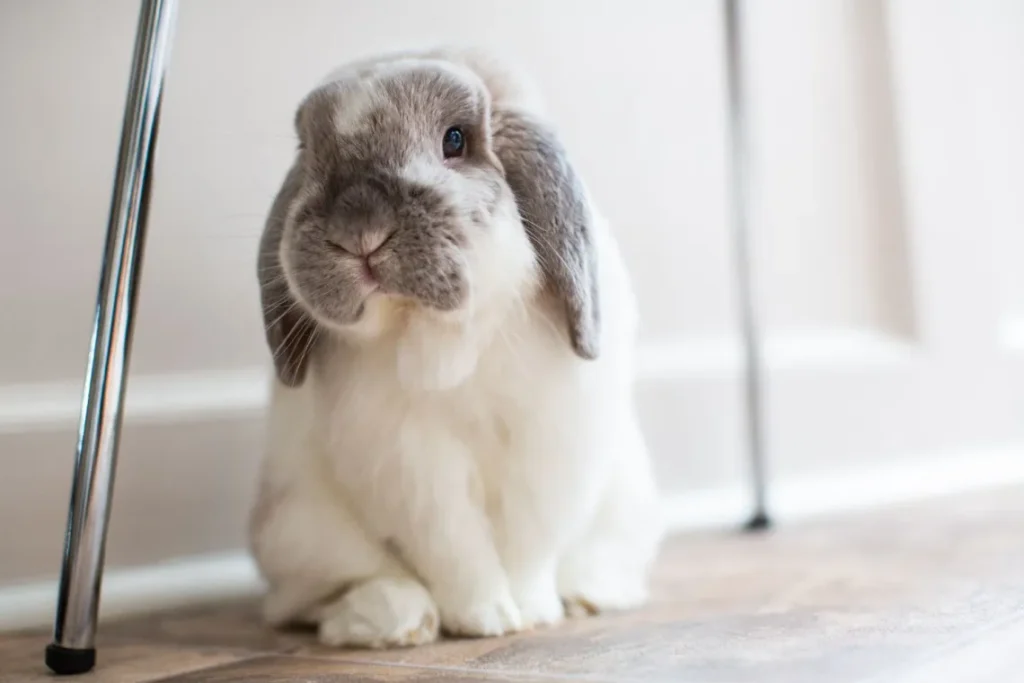
- Size: Mini Lops are a small to medium-sized breed, typically weighing between 4.5 to 6.5 pounds, with a compact and adorable appearance.
- Temperament: They are known for their sweet and friendly nature, making them great pets for children. Mini Lops are usually gentle and enjoy human interaction.
- Lifespan: 5-10 years.
- Special Care Requirements: Regular grooming is essential, especially around their lop ears.
The Mini Lop Rabbit is a delight for children with its amiable personality and manageable size. Originating from Germany, Mini Lops are known for their compact, muscular bodies and adorable floppy ears, which are characteristic of the breed. These rabbits are small, making them comfortable for children to handle.
Mini Lops are not just eye candy; they are remarkably sociable and enjoy being part of family activities. They love to play, explore, and even perform tricks, which can be a source of unending amusement for children. Unlike some breeds, Mini Lops are not particularly skittish. They can form strong bonds with their human families, making them an excellent choice for families with children.
However, like every pet, Mini Lops require dedicated care. To thrive, they need a balanced diet of high-quality rabbit pellets, fresh hay, water, and the occasional treat. Their living space must be spacious and secure, with plenty of toys to stimulate them. Regular grooming is also essential to keep their dense, plush coat in good condition.
Above all, Mini Lops need love, attention, and interaction. They are social creatures who thrive on companionship, so ensure you have ample time to spend with your furry friend. In return, a Mini Lop will shower your family with affection, bringing joy and companionship to your home. So, if you’re considering adding a new pet to your family, the friendly and pleasant Mini Lop rabbit deserves serious consideration.
Holland Lop – Great for First-Time Pet Owners as They are Low-Maintenance
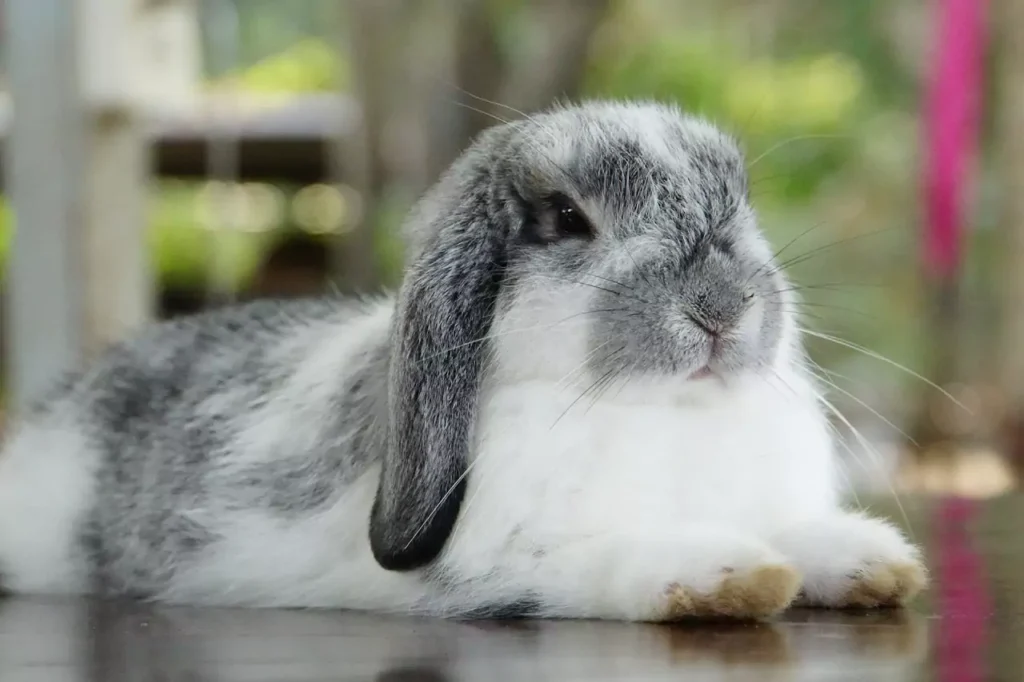
- Size: Holland Lops are a small breed, typically weighing between 2 to 4 pounds and having a compact body.
- Temperament: They are known for their gentle and friendly disposition, making them excellent companions for kids. Holland Lops is generally easygoing and enjoys human interaction.
- Lifespan: 7-14 years.
- Special Care Requirements: Regular grooming is necessary due to their lop ears, which can collect dirt and require cleaning.
Let me tell you, having a Holland Lop rabbit as a pet is nothing short of delightful. They are a small rabbit breed, yes, but they pack in a world of charm in their compact bodies. If you have been around lop breeds, you know that their floppy ears are a characteristic feature – something that makes them stand out in the crowd of pet rabbits. They are not just adorably cute, but their sweet nature is genuinely captivating.
This breed originated in the Netherlands (hence the name ‘Holland’), and they’ve been winning hearts worldwide ever since. Holland Lop rabbits are known for their laid-back, friendly demeanor and quickly become cherished family members.
One of the best things about the Holland Lops, particularly for those new to the rabbit world, is their adaptability. They’re just as happy to snuggle up with you on the sofa as they are to explore and play in a safe outdoor area. So, if you’re considering welcoming a Holland Lop rabbit into your home, rest assured, you’re in for a loving, adorable companion who will bring much joy to your life.
Lionhead Rabbit – Loves to Play and Be Around People, Especially Children
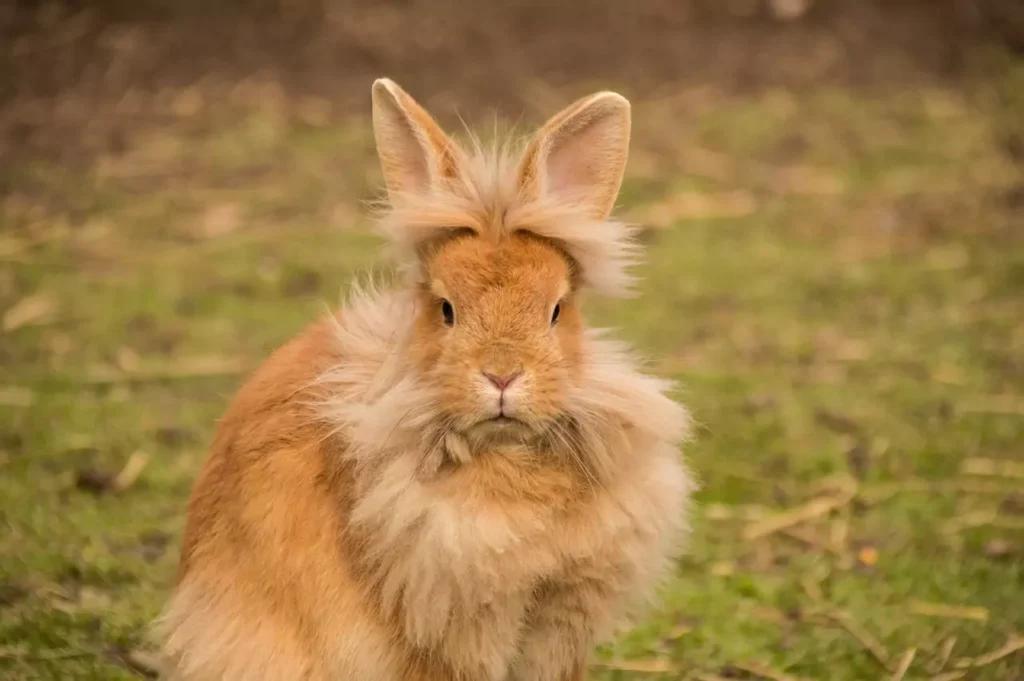
- Size: Lionheads are a small breed with a distinctive fur mane, weighing between 2.5 to 3.75 pounds.
- Temperament: They are friendly and curious, making them great for kids. They can be quite friendly and enjoy being handled.
- Lifespan: 7-10 years.
- Special Care Requirements: Their mane requires regular grooming to prevent matting. Provide a balanced diet and a secure enclosure to keep them safe.
Lionhead rabbits never fail to make the list of favorite indoor rabbit breeds. These little furry bunnies, with their distinctive mane resembling a lion’s, are a sight to behold! They’re not just all about their looks, though. These affectionate pets have a way of wriggling their way right into your heart.
Lionheads are incredibly sociable creatures. Their inquisitive nature and love for play make them a delightful addition to any home. Whether it’s a quick game of hide and seek or a peaceful moment of cuddles, they’re always up for it. I’ve found that they absolutely adore being the center of attention and will often demand it! One of those personality traits sets them apart and makes them such endearing pet rabbits.
Let me tell you a little about where this rabbit breed originated. The Lionhead rabbit breed hails from Belgium, where breeders combined two different types of rabbits to create this cute, fluffy creature we know and love today. Sadly, they didn’t document the exact breeds used in the creation, but look at them! Who can resist that mane and those adorable floppy ears?
These pet rabbits may require a bit more care than some other breeds due to their unique mane, which needs regular grooming. Despite this, they remain among the most popular choices for those seeking a rabbit companion. Their active, playful nature, combined with their affectionate persona, makes them an absolute joy to have around. Trust me, once you’ve experienced the love of a Lionhead rabbit, it’s hard to imagine life without these lovable little creatures around.
Flemish Giant Rabbit – A Gentle Giant that Loves Cuddles and Attention From Kids
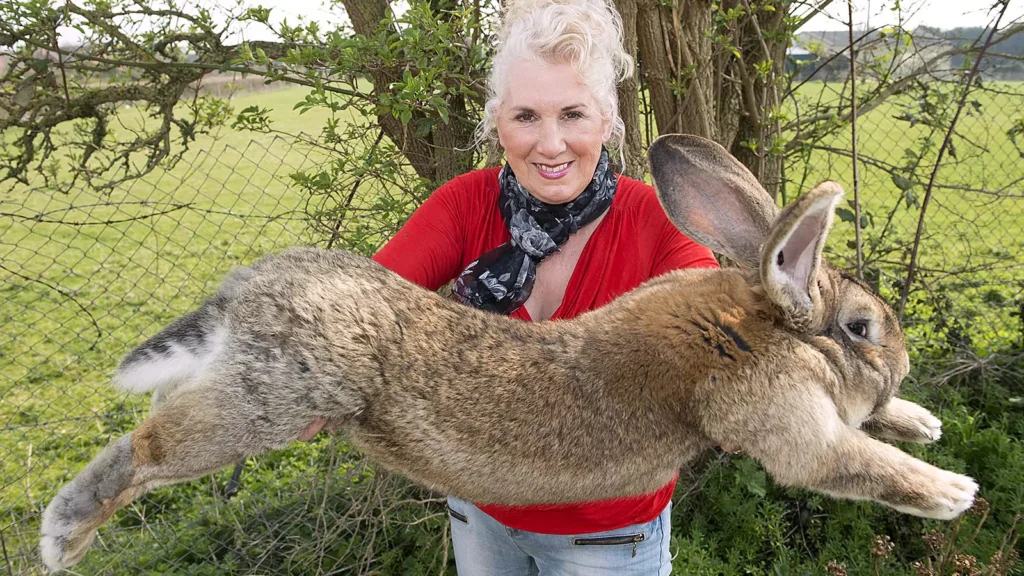
- Size: Flemish Giant Rabbits are one of the largest rabbit breeds, with adults weighing between 13 to 14 pounds or more.
- Temperament: Despite their size, they are known for their gentle and docile nature. They can be great with kids but require proper handling due to their weight.
- Lifespan: 8-10 years.
- Special Care Requirements: Provide a spacious living area to accommodate their size, a diet with particular attention to preventing obesity, and regular health checks due to their large frame.
When you first lay eyes on a Flemish Giant Rabbit, you might be taken aback by their size. But let me tell you, these giant breeds are nothing short of fantastic! The breed originated in Belgium—hence the name “Flemish”—and they’ve been winning hearts worldwide ever since. Their sheer size is their defining feature. Thus, the term “giant rabbit” fits them perfectly.
But it’s not just their size that is captivating. Their personality traits are equally appealing. These giant rabbits are gentle, docile, and have a knack for grabbing attention, especially from kids. They have this charming way of cuddling right next to you, making you feel like you’re the only one in the world who matters. Trust me, once a Flemish Giant Rabbit snuggles up to you, you’ll know true love!
Now, onto the topic of a healthy diet for these huge bunnies. Due to their size, they require a bit more food than your average rabbit breeds. But don’t be fooled into thinking you should just give them more of everything—they have a sensitive digestion, and their diet needs to be balanced. Lots of hay, a handful of pellets, and some fresh fruits and vegetables are all you need to keep your Flemish Giant healthy and happy.
It’s also worth mentioning that they need a spacious area to live in. A small cage won’t cut it for these giant breeds. They need space to roam around, stretch those long legs, and enjoy being the giant bunnies they are. Their loveable persona, combined with their unique features, make the Flemish Giant Rabbit an exceptional breed. Once you’ve had a Flemish Giant in your life, it’s hard to imagine being without one.
Harlequin Rabbit – A Unique Breed with a Playful Attitude

- Size: Harlequins are a medium-sized breed, weighing around 6 to 9 pounds.
- Temperament: They are known for their active and playful nature, making them entertaining companions for children.
- Lifespan: 5-8 years.
- Special Care Requirements: Regular exercise and mental stimulation are essential for their well-being. Their distinctive coat pattern may need occasional grooming to keep it in good condition.
As a rabbit owner, my experience with Harlequin rabbits has been nothing short of vibrant. These furry bunnies have a unique coat that’s a patchwork of colors, making them one of the most visually striking rabbit breeds out there.
Each Harlequin rabbit is like a living, hopping piece of art, with no two sporting the same pattern. This trait alone makes them one of the most popular rabbit breeds among enthusiasts.
Now, let’s talk about caring for these endearing creatures. A healthy diet is absolutely vital when it comes to the longevity and overall happiness of Harlequin rabbits. From my experience, I found that a balanced mix of fresh vegetables, high-quality rabbit pellets, and abundant hay keeps them sprightly and content. With their playful and active nature, ensuring they get enough exercise is also essential.
Harlequin rabbits are not just indoor bunnies; they can be outdoor rabbits, too! Just make sure your outdoor space is secure. In my experience, some rabbit breeds -including Harlequins- love the outdoors almost as much as they love lounging indoors. The key is giving them the freedom and space to explore, hop around, and, at times, indulge in their naughty side.
Active playtime is another aspect we shouldn’t overlook. Rabbit toys can significantly enhance their experience and keep them entertained. Watching a Harlequin rabbit interact with its toys is a spectacle in itself. I recommend my bunny’s favorite toys: tunnels to crawl through, balls to nudge around, and small sticks to gnaw on. It’s always a joy to watch them engaged and just be the playful, quirky bunnies they’re known to be.
English Angoras – Loves to Be Groomed by Kids and Can Make Great Friends with Them
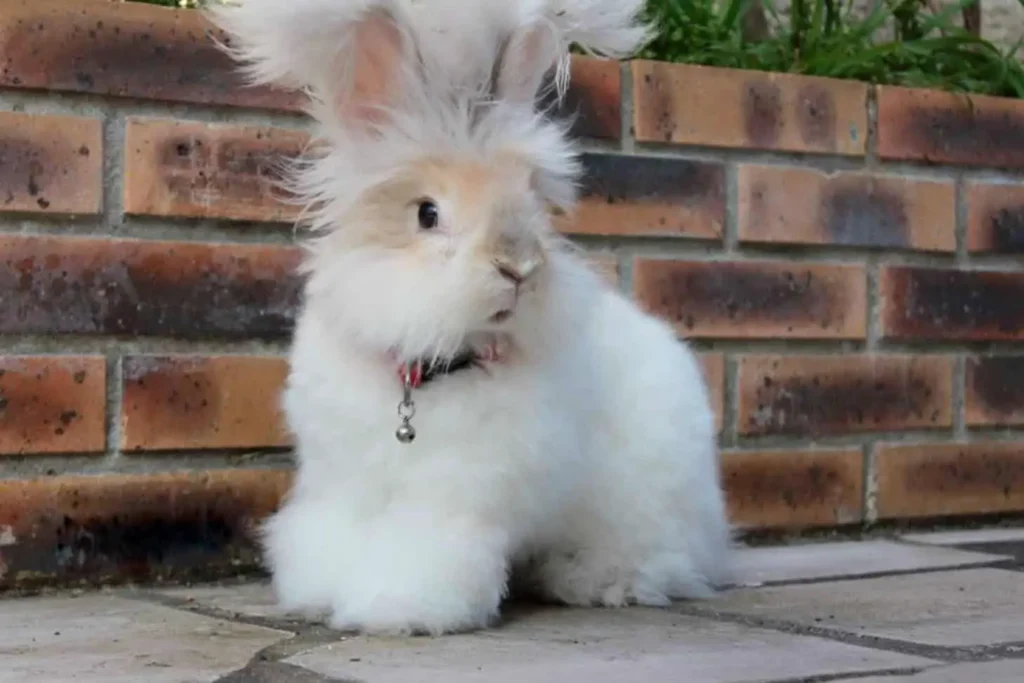
- Size: English Angoras are a small to medium-sized breed, with adults typically weighing 5 to 7 pounds.
- Temperament: They are known for their calm and gentle disposition, making them suitable for children. They can be quite affectionate.
- Lifespan: 5-8 years.
- Special Care Requirements: Their long, soft fur requires meticulous grooming to prevent matting. Regular shearing is also necessary to keep their coat manageable.
Ah, the English Angora Rabbit is a sight to behold and definitely a rabbit breed that makes an impression. They’re quite the charmers with their long fur, so incredibly soft and fluffy, you’d think you’re petting a cloud. Their fur is unlike any other rabbit breed, and the upkeep, while a bit extensive, is worth every minute spent on it.
Now, let’s talk a bit about their history. The English Angora rabbit is an old breed, quite possibly one of the oldest rabbit breeds -domesticated- known to humankind. Many believe it’s a descendant of the wild hare, a common ancestor to many breeds. It’s fascinating to think about these fluffy creatures sharing some lineage with the lean and agile wild hare, right?
Swinging back to their looks, I can’t help but draw a comparison with the English Lop, another crowd favorite. While the Lop is known for its distinct, long ears, the Angora is beloved for its wooly appearance. But let’s not forget that despite the differences in looks, they both share an affectionate nature, making every interaction a heartwarming experience.
The English Angora, with its calm temperament and amusingly fluffy fur, is one of the unique Angora rabbits that make rabbit-keeping a joy. The care they require, the time you spend grooming them, and the bond you will form all contribute to a rewarding experience. Remember, no two rabbit breeds are the same. Each has its own quirks and charms, much like us, don’t you think?
Netherland Dwarf Rabbit – Small But Mighty, This Cute Little Rabbit Will Make a Perfect Companion for Any Child!
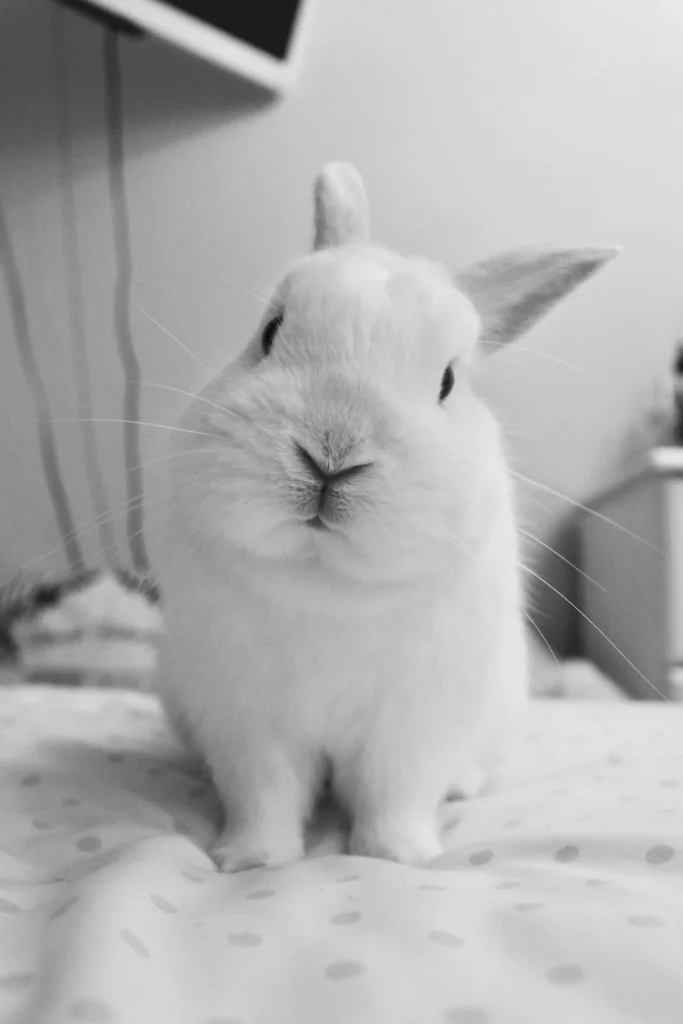
- Size: Netherland Dwarfs are one of the tiniest rabbit breeds, typically weighing between 1.1 to 2.5 pounds.
- Temperament: They are playful and active, which can appeal to kids. They are known for their friendly and curious nature.
- Lifespan: 10-12 years.
- Special Care Requirements: Provide a secure enclosure to prevent escape, and be mindful of their size when handling. Regular interaction and mental stimulation are essential for their well-being.
If you’re a fan of the smallest rabbit breeds, you wouldn’t want to miss out on the Netherland Dwarf Rabbit! With their compact size and playful antics, they’re quite the sight to behold. Don’t be fooled by their size, though; these little guys pack a whole lot of personality!
While they may be small, the Netherland Dwarf Rabbit can definitely hold their own in terms of charm and charisma. As a dwarf breed, they are naturally more active and curious, which makes them quite amusing companions. Watching them explore their surroundings with their tiny paws and twitchy noses is always a joy. You’ll be amazed at how much energy they have for such small rabbits!
However, one thing to note about this rabbit breed is their need for a secure enclosure. Because of their petite size, Netherland Dwarfs can be quite the escape artists! It’s important to provide them with a safe, secure environment where they can’t easily slip through the bars. After all, you wouldn’t want your little adventurer getting into places they shouldn’t be!
But let’s not forget, the Netherland Dwarf isn’t just one of the smallest rabbit breeds; it’s also one of the friendliest! They are known for their sociable and curious nature, which makes them great companions. These tiny bundles of joy will surely steal your children’s hearts with their delightful personalities and endearing looks. To sum it up, Netherland Dwarfs are like little bundles of charm wrapped in fur – an absolute delight to have as part of your family!
Wrapping Up
In the grand scheme of things, picking a rabbit breed like the Netherland Dwarf isn’t just about their size or charm. It’s about bringing a bundle of joy into your home, a furry little friend who will add warmth and laughter to your days.
Now, you might be wondering, “What about other rabbit breeds?“. Well, let me tell you, when it comes to variety, the rabbit kingdom is rich and diverse. From the English Angora to the Flemish Giant, the world of rabbit breeds is a playground of fluffiness.
You might also ask, “How do I navigate this vast sea of rabbit breeds?” That’s where the American Rabbit Breeders Association comes in. This organization is a treasure trove of information on various rabbit breeds, making finding the perfect bunny companion easier. By connecting with the American Rabbit Breeders Association, you’re not just obtaining information – you’re entering a community of rabbit enthusiasts who are always ready to share their experiences and insights.
In the end, whether you decide to welcome a Netherland Dwarf or explore other rabbit breeds, remember that it’s all about the bond you’ll form with these adorable creatures. They’re not just pets. They’re friends, companions, and, most importantly, part of your family!
Related Questions
Which Rabbit Is The Best For Beginners?
When it comes to choosing the best rabbit for beginners, one breed jumps to mind – the Netherland Dwarf.
These tiny furballs are not just incredibly adorable, but they’re also very sociable and curious. Their playful and active nature makes them a joy to have around, especially for kids. Imagine those tiny paws exploring around, those twitchy noses sniffing curiously – such a delight!
However, do remember that they can be quite the escape artists, so a secure enclosure is a must. In essence, Netherland Dwarfs make fantastic companions for first-time rabbit owners, offering the perfect mix of charm, charisma, and an endearing personality.
Just remember to give them space to explore, and they will reward you with loads of fun and affection.
What Rabbit Breed Acts Most Like a Dog?
If you’re looking for a rabbit breed that acts most like a dog, then the Flemish Giant could be your best bet.
These bunnies are known not only for their large size but also for their dog-like behavior. They are friendly and outgoing and have a knack for bonding with their human families. Their playful nature and high energy level make them perfect for people who love the active lifestyle of dogs.
Flemish Giants are gentle giants at heart despite being a bit larger than your average bunny. They love being petted and stroked, just like dogs, and they can develop a strong bond with their human owners.
Just like dogs, they need plenty of space to run around and play, so be ready for that. So, if you’re looking for a rabbit with a dog’s spirited personality, the Flemish Giant might just be the perfect match for you!
Are There Any Common Misconceptions About Rabbit Care for Kids?
Absolutely, there are a few common misconceptions about rabbit care that can crop up, especially when it’s for kids.
One of the major ones is that rabbits are low-maintenance pets, similar to hamsters or guinea pigs. But in reality, each rabbit breed, be it the playful Netherland Dwarfs or the energetic Flemish Giants, calls for a significant amount of care and attention. They need a balanced diet, regular grooming, and ample space to hop around and explore.
Another misconception is that all rabbits love to be cuddled and carried. While the Flemish Giants do enjoy a good petting, not all rabbits appreciate being held. It can sometimes cause them stress, and they might even try to wriggle free, which could lead to injuries. So, it’s always a good idea to let the little ones know that our bunny friends, like us, have unique preferences and boundaries!
What Are The Best Practices for Introducing a Rabbit to Children?
Introducing a rabbit to children can be a joyful and enriching experience if done carefully and thoughtfully.
First, teaching your kids about the rabbit’s behavior and needs is critical. Show them how to approach the rabbit gently and without startling it. Let them know that rabbits are not toys but living beings who need care, respect, and love.
A hands-on approach can work wonders. Under your supervision, let the kids participate in caring for the rabbit. They can help feed, groom, and even clean the rabbit’s living space. This makes them accustomed to the rabbit and teaches them about responsibility. Remember, each interaction should be calm, slow, and stress-free for the rabbit. And remind the kiddos that not all rabbits like being carried or cuddled excessively. It can take a little time for the bond to develop, but once it does, it’s a truly rewarding friendship!

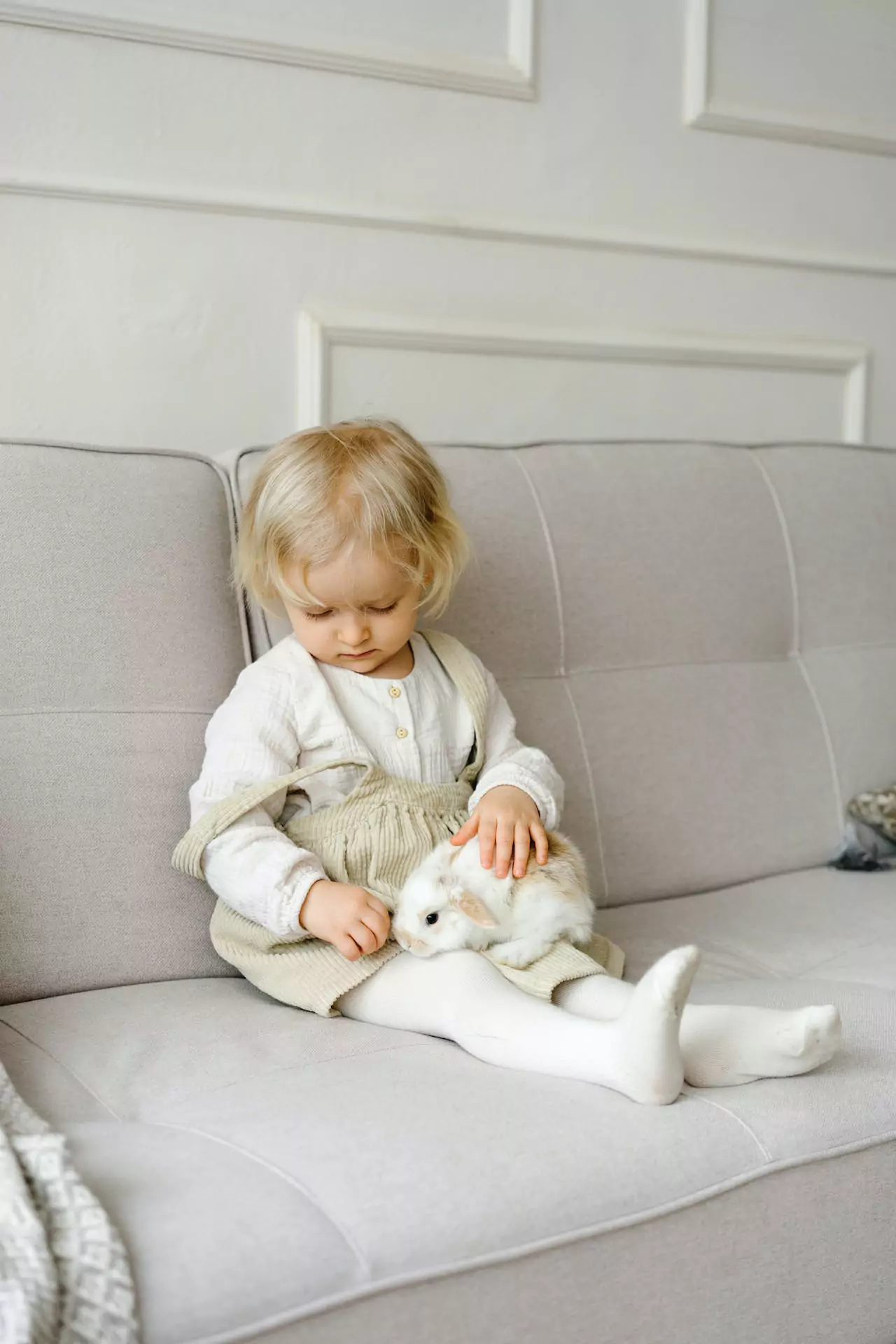
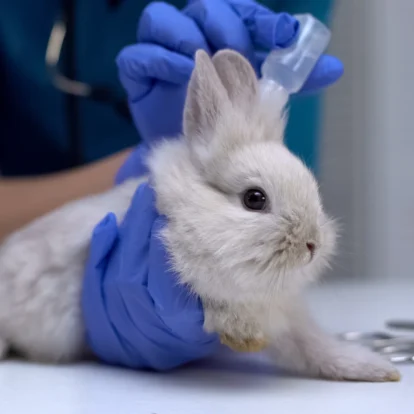

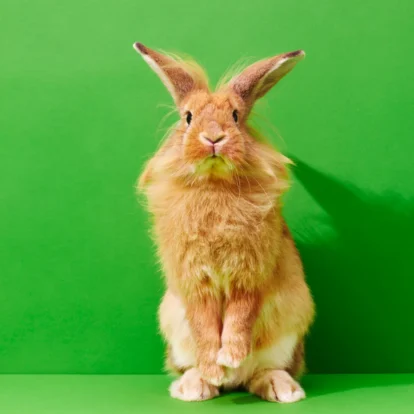
One Reply to “Top 7 Kid-Friendly Best Rabbit Breeds: Perfect Pets for Children”
Comments are closed.